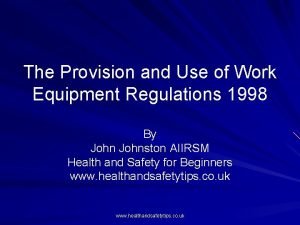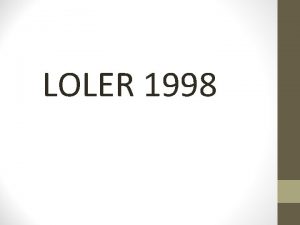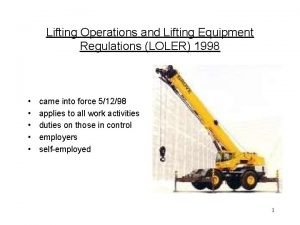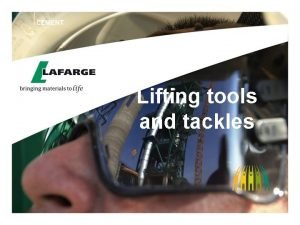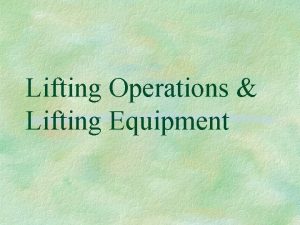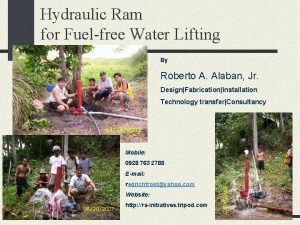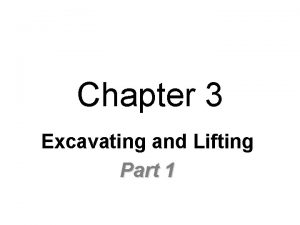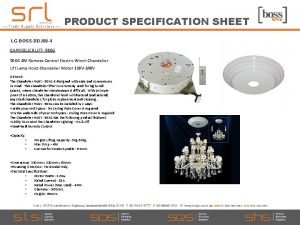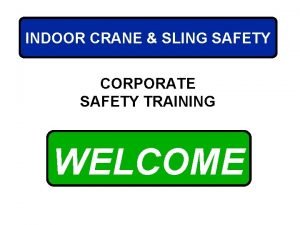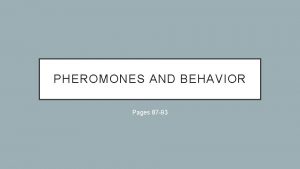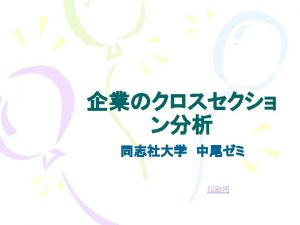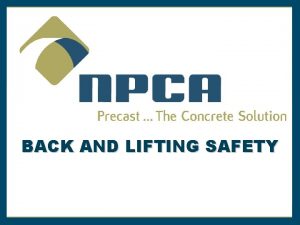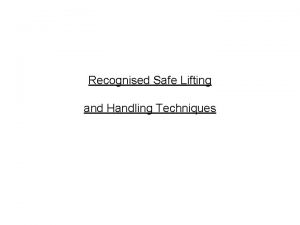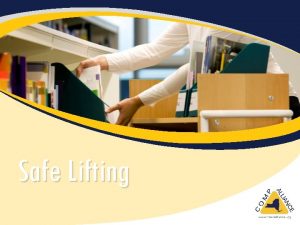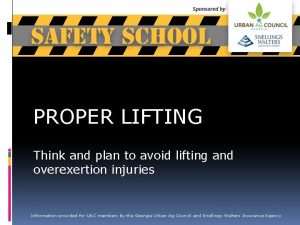Lifting Operations and Lifting Equipment Regulations LOLER 1998







![Lifting operations - Use a Safe System of Work [SSOW] • Appointment of competent Lifting operations - Use a Safe System of Work [SSOW] • Appointment of competent](https://slidetodoc.com/presentation_image_h/a9096f96460060f4fba2a4be4f5080b7/image-8.jpg)


- Slides: 10

Lifting Operations and Lifting Equipment Regulations (LOLER) 1998 • • • came into force 5/12/98 applies to all work activities duties on those in control employers self-employed 1

What’s been lacking up to now? • Not risk based • Regs limited by industry FA 1961, s. 26 -27 • hasn’t covered all lifting equipment • different Regs, different requirements • contradicts Machinery directive • http: //www. towercrane. com/ tower_cranes_Detail_Selec t. htm 2

Key definitions • Lifting equipment - “work equipment for lifting or lowering loads and includes its attachments used for anchoring, fixing or supporting it” • accessory for lifting - “work equipment for attaching loads to machinery for lifting • lifting operation - concerned with lifting or lowering of a load • Load - includes people 3

Examples Traditionally; • Equipment - cranes, lifts and hoists • Components - chains, ropes, slings, hooks, shackles and eyebolts • eg office block passenger lift, rope and pulley lifting bucket on site, dumb waiter, vacuum lifting crane, vehicle inspection hoist, scissors lift 4

Main elements of LOLER • Regulations 4 to 7 - basics – strength and stability [Reg 4] – Lifting Equipment for lifting persons [Reg 5] – Positioning and installation [Reg 6] – Marking of Lifting Equipment [Reg 7] • Regulation 8 - planning for safe lifting operations and safe operation of equipment; – HSE guidance and British Standard BS 7121: part 1: 1989 • Regulation 9 - Thorough examination and inspection; – deals with initial and continuing integrity of equipment. 6

Planning and conducting lifting operations safely • HSE guidance - L 113, ‘Lifting Operations and Lifting Equipment Regulations 1998: Safe use of Lifting Equipment. Approved Code of Practice and Guidance’ • British Standard BS 7121: part 1: 1989 • Employers shall ensure that every lifting operation is; – properly planned by a competent person – supervised – carried out safely 7

Competent to plan and supervise • The competent person should have adequate and theoretical knowledge and experience of planning lifting operations • ‘appropriate supervision’ means that it should be proportionate to the risk, the nature of the work and the competence of those involved 8
![Lifting operations Use a Safe System of Work SSOW Appointment of competent Lifting operations - Use a Safe System of Work [SSOW] • Appointment of competent](https://slidetodoc.com/presentation_image_h/a9096f96460060f4fba2a4be4f5080b7/image-8.jpg)
Lifting operations - Use a Safe System of Work [SSOW] • Appointment of competent persons – management & supervision of lifting operation to SSOW; – crane driver – slinger • safe system of work devised – contractual considerations; • on hire • under contract – selection of lifting equipment suitable for the load and conditions; • examination and inspections • big enough to reach and lift the load? – Planning of the operation on site

Planning of the operation on site • Load weight, its charactersitics and lifting points – safe working load limits [SWL] – load centre of gravity – Crane duties under different configurations • selection of lifting accessories and slinging method • site hazards; – proximity hazards, eg. Power-lines, structures, other building operations, ground stability, space for maneouvring; – erection or dismantling risks; – weather [wind loading] • Lift – communications – control of raised load [tag-lines] – visibility – path of lift [work under suspended loads]

Thorough examination and inspection of lifting equipment • Thoroughly examined for any defect: – Competent person to draw up examination scheme, including frequency – before 1 st service use but after installation – after assembly, before 1 st service or at new site or location, to ensure correct installation and safe to operate – where exposed to conditions that may cause deterioration likely to result in danger, it must be examined; • passenger lifts at least every 6 months ; • other lifting equipment at least every 12 months. – After exceptional circumstances have occurred that may have adversely affected the lifting equipment 11
